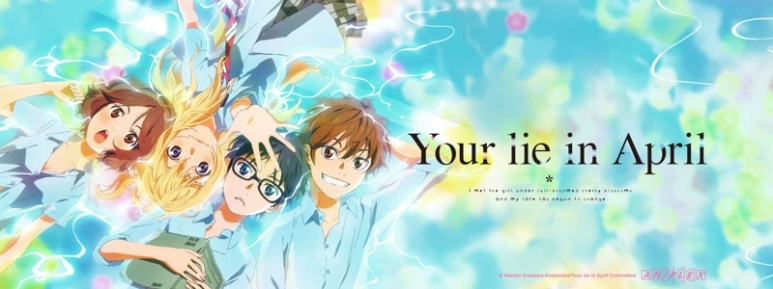
©Madman Entertainment ©Aniplex of America

©Madman Entertainment ©Aniplex of America
1) DIGIMON ADVENTURE TRI 2: KETSUI
In the small town of Odaiba, Alphamon appeared after a long time has passed.
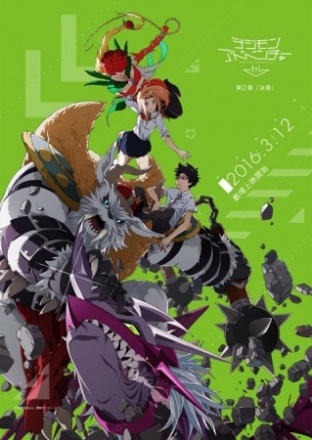
©Toei Animation
Air date: March 12, 2016
Genre: Action/Adventure, Comedy, Drama
Rating: PG-13
Watch the official teaser here:
(Source: http://digimon-adventure.net/story/index_en_02.html)
2) KAZE AND MATASABURO
Due to her fathers job, a little girl must move to a school in the countryside away from the city. She’s ignored by her fellow classmates and afraid to get close to a boy she likes because she’s worried he will treat her unfairly. Eventually becoming fed up of the countryside, she moves back to the city where she winds up meeting a real god of the wind.
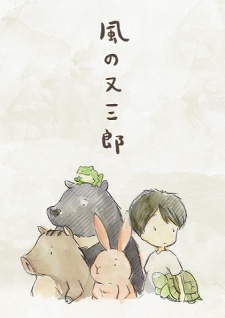
©Buemon
Air date: March 19, 2016
Genre: Fantasy/Supernatural
Rating: None
(Source: http://myanimelist.net/anime/30922/Kaze_no_Matasaburou_Movie)
3) UTOPA
Due to the nuclear and biological weapons, nature and the ecosystem has been destroyed hundreds of years after the 20th century. The Earth’s living beings and plants are almost extinct because of all the contamination and starts heading towards the ‘Big Six’, the sixth mass extinction event. Humanity starts migrating animals and plants to cities built in the sky, where over a number of years these animals start to evolve. With artificial genetic crossbreeding, they create a whole new life and civilisation for themselves and no one thinks the world below exists anymore. However, some of the children become curious and wonder below not knowing there is no return.
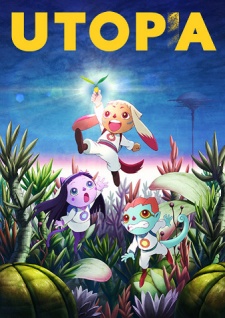
© Studio 4°C
Air date: March 19, 2016
Genre: Sci-Fi
Rating: None
4) COLOURFUL NINJA IROMAKI
Himeno, third grader, moves to the country in a huge mansion, which she soon discovers is a ninja house. Himeno is mistaken for a princess by these ninjas and they start solving all her problems with their skills and talent.
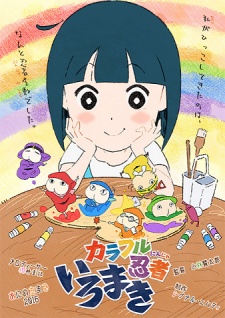
© Signal, MD
Joe Pettitt, an amateur screenwriter, has fortunately written a fantastic review on Kurosawa’s Rashomon (1950) for you all to read.
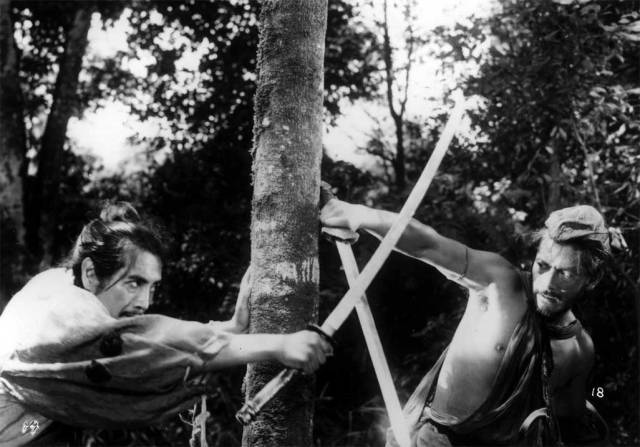
© Daiei Film Co., Ltd.
“Well men are only men. That’s why they lie. They can’t tell the truth, even to themselves”
It can be assumed that most film fanatics can recall, with detail, scene’s from their favourite courtroom drama – a sub-genre that transports the viewer through the grand, unshaken walls of a legal house. It is in this transportation that the genre emits its allure and suspense, wherein the viewer must watch on, often through the dramatic irony of knowing the truth, but powerless to affect the verdict. This is perhaps what has made the legal drama such an enjoyed subgenre within hollywood for so many years. Kurosawa’s Rashomon hit the western cinema screen in 1951 a year after its initial release in Japan and it rocked the film industry in a way no one saw coming. Kurosawa neglected to endow his audience with the foresight of knowing what really happened, thus presenting an unsolved mystery about interpretation and the ego’s embellishment of the truth.
Kurosawa’s Rashomon takes place in rural Japan, presumably pre-dating the Second World War by decades. Still mourning the loss of Hiroshima and Nagasaki, many enjoyed and took pride in narratives of classical sensibilities, distracting them from the realities of post war Japan. It’s opening shots of a decrepit, pre-war Japanese building is symbolic of the devastation the war inflicted on the nation and nods to this popular nostalgic mindset of the people at the time. The rain helps to reinforce this melancholy but is also used wonderfully by Kurosawa as a device to convey the differing time zones in which our narratives take place. In one of the most beautiful scene transitions in classic cinema, we come from the heavy rain of the opening shots to see the woodcutter wandering through the forest, as the camera points upward through the canopy with the sun shining through the leaves, we seemingly enter another realm. Kurosawa uses weather fantastically in this film.
Through the rain that pours over the building at the beginning we are introduced to three men, who huddle around a fire – the visual equivalent of someone saying ‘You are about to be told a story’ – and the events of our court hearing are disclosed. From here we are told three contradicting stories surrounding the murder of a samurai. One from the point of view of the Bandit Tajomaru, one from wife of the murdered samurai, and one from the samurai himself who communicates through a medium. Each character’s story is portrayed with the same conviction as the next, all seemingly believing what they say. This is what made the this film so difficult for western audiences to grasp. Kurosawa’s narrative arcs contradict and yet are all equally plausible and true, it is as if he is asking us to confront our prejudices. Do we believe the filthy bandit, with his scratchy skin, swatting flies and raping women? Do we believe the wife, who one of the characters describes as a typical woman who will believe her own lies? Or is it the samurai whose story bears the most candour, speaking through the mystical medium? – As the priest says ‘dead men tell no lies’. These are the questions we ask when watching Rashomon with narratives that are truth, lie and neither at the same time, in a film that is courtroom drama, mystery and something entirely it’s own as well.
Joe Pettitt
Just like any other superhero film (Batman vs. Joker, Iron Man vs. Ultra), anime has a range of villains who are actually a little more crazy and mind boggling than some in Hollywood. Everyone usually praises the heroes but sometimes the antagonists need some celebrating… Here are some of my top villains, which are yours?
NAKARU – Inuyasha (2001)
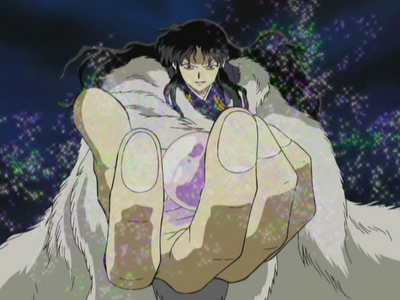
© Viz Media
The main antagonist in the manga series, Inuyasha (2001, written and illustrated by Rumiko Takahashi), Nakaru is pretty much impossible to kill. After being viciously burned by his gangs boss, and being rejected by the woman of his dreams, Kikyo (priestess who started caring for him), Nakaru is born through a deal with local demons. His distinguishable power is the art of manipulations, able to get anyone on his side and do what he wants, making him one of the most evil and malicious villains in anime.
VEGETA – Dragon Ball Z (1996 – 2003)
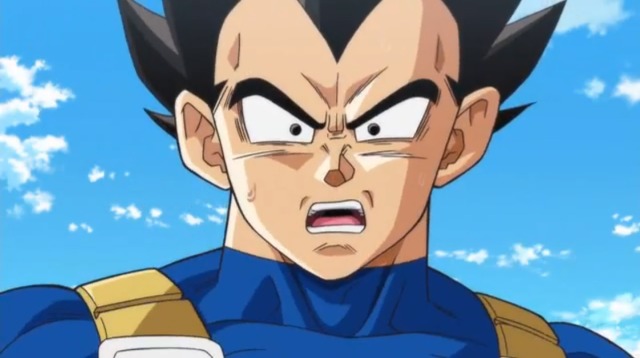
© Madmen Entertainment
A sort of half villain, Vegeta is the most famous of antagonist of all anime. At first Vegeta was a cold hearted, savage killer with an aim to defeat and overthrow arch-rival Goku. However, whilst still continuing his quest he evolves into an anti-hero and later into a protagonist who fights alongside the Z fighters.
JOHAN LIEBERT – MONSTER (2004)
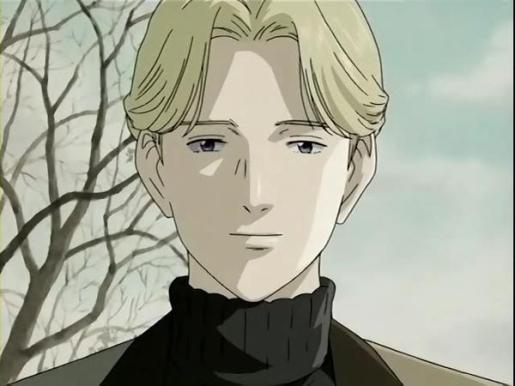
© Shogakukun
John Liebert is considered the top villain in anime amongst fans and the type you would expect to see in a Hollywood blockbuster. Johan is the main villain in Japanese manga series Monster (2004, written and illustrated by Naoki Urasawa) who is a huge sociopath and throughout much of his life lived under a bunch of different aliases. Inheriting his mother’s brains and reasoning skills, Johan is also a great manipulator with no conscious and takes joy in others pain. It is still not known as to why he is so twisted, some may say it’s because of the orphanage he grew up in with his sister, which performed experiments on children and treated them like rubbish, but the orphanage claims he was already dysfunctional when he walked through their doors.
LUCY – ELFREN LIED (2004) (my personal favourite)
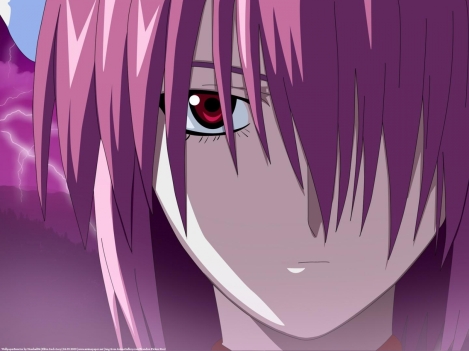
© Viz Media
Lucy is the most prominent character in this anime manga series, Elfren Lied (2004, written and illustrated by Lynn Okamoto). There is only one word to describe her: INSANE!. The cruelty which surrounded her was eventually what broke her and made her become a callous, brutal character. After being bullied and realising she had these destructive powers, she would go round killing all the boys who bullied her, and went around house to house in the countryside killing families. She ends up becoming even more crazy when she started infecting fathers with ‘devil sperm’ so these parents would give birth to girls who are just like her who would then kill their families.
LIGHT – Death Note (2006)
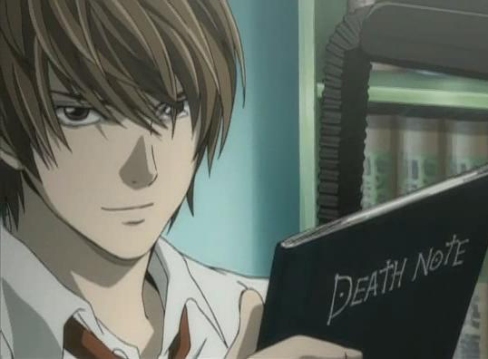
© Viz Media
Japanese manga series Death Note (2006, written by Tsugami Ohba and illustrated by Takeshi Obata) follows the story of high school student Light Yagami. Light had it all going for him, smart student, training in his fathers footsteps to become a policeman, until he receives a death note where we see him embark on a transformation becoming a judge, jury, and executioner for the whole world.
And the top 5 Japanese blogs are… In no particular order…
1) Tofugu

Tofugu is ideal for anything really. They offer travel guides, reviews, and a bunch of videos and interviews related to Japan and its culture.
2) Off The Block Site

This blog is generally reviews on anything from films to video games. I found these anime reviews very interesting as I discovered new film I had never heard of before. They blogger also posts some of their own short stories which are definitely worth a read.
www.offtheblocksite.wordpress.com
3) Daiyamanga

Daiyamanga is perfect if you’re intrigued to know that little bit more about Japanese manga. Offering reviews on manga series and not just individual manga, AND reviews on anime. Fabulous blog!
4) Funny Anime Pics

The title is pretty self explanatory. If you’re in the mood for some homemade hilarious gifs/memes check out this blog. The author even writes adult fantasy novels which you can view on his author website (www.cassidycornblatt.wordpress.com)
www.funnyanimepics.wordpress.com/
5) Tokyo Fox
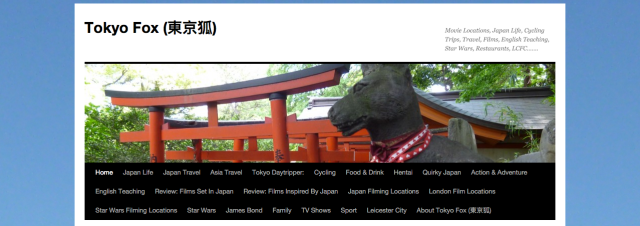
This blog is written by an English teacher in Tokyo and freelance journalist. It’s an extremely insightful blog. He posts about his travels, food & drink, action and adventure, reviews all around Japan, and so much more!
For the first time in my life I made a 3 course Japanese meal… and it turned out SO delicious. Thanks to www.japanesecooking101.com I managed to cook Karaage (Japanese fried chicken), Salmon Teriyaki, and Dorayaki (the fluffiest pancakes).

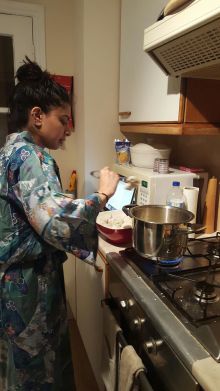
Starter:
1) KARAAGE (Japanese Fried Chicken)
Karaage is essentially a traditionally Japanese meat or fish dish. Anything fried is tasty to me so i decided to make a ton load. This dish is usually cooked with chicken thigh but I decided to make chicken wings instead which took slightly longer than thighs would.
Prep: 30 min – 1 hour
Cook time: 10-20 minutes
Servings: 6 people
Ingredients:
750g of chicken wings (equivalent to around 6 chicken thighs)
2 1/2 tbsp of Sake
2 tbsp of Soy Sauce
1/2 tsp of Salt
3-4 tsp grated garlic
3-4 tsp grated ginger
1 cup of all purpose flower
1 cup of corn starch/flour
oil for cooking
salt and pepper
Method:
– In a bowl, mix Sake, Soy Sauce, salt, garlic and ginger. Then place the chicken in and mix together. Leave for around 30 minutes to 1 hour to marinate.
– In a different bowl, mix together the corn starch/flour and the salt and pepper and sieve into the marinated chicken bowl and mix it all together.
– Heat around 5 cm of oil (enough to cover the chicken at least half way) at a medium/high heat
– Deep fry for 15-20 minutes, or till its golden brown and crispy.
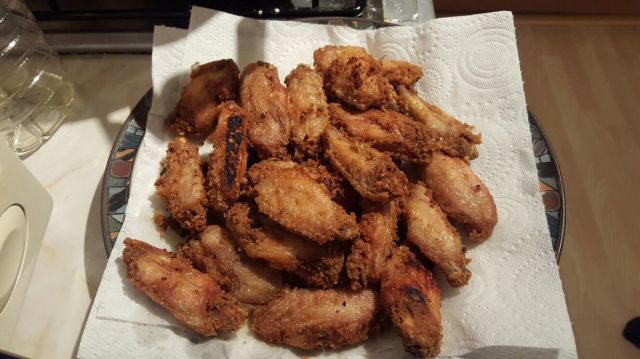
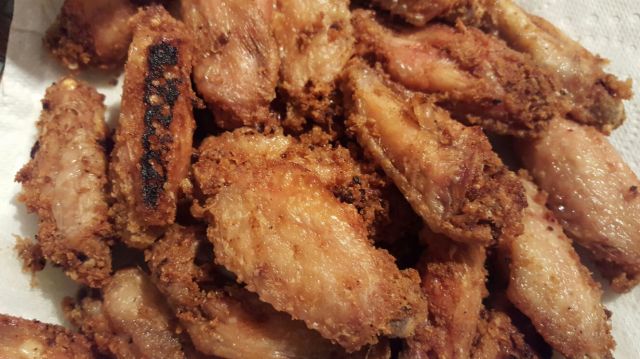
Recipe and method courtesy of: http://www.japanesecooking101.com/karaage-recipe/
Main:
2) SALMON TERIYAKI
Salmon Teriyaki is pretty much loved by everyone. The teriyaki sauce is sweet and salty making it one of my favourite dishes ever.
Prep: 5 minutes
Cook time: 15 minutes
Servings: 4 people
Ingredients:
4 tbsp of Soy Sauce
2 Salmon fillets, sliced in half long ways
2 tbsp of Sake
1 tbsp of sugar
1 tsp of grated ginger root
1 tsp of vegetable oil
Method:
– Mix the Soy Sauce, Sake and ginger in a small bowl
– Heat the oil in a frying pan at a medium, once hot place salmon in the pan skin side down.
– Cook the salmon for around 3-4 minutes on each side
– Once pretty much cooked, reduce the heat and add the sauce. Wait until the sauce starts to thicken and after around 4-5 minutes remove from pan, ready to serve.
I ended up adding more teriyaki sauce from the packet because unfortunately I didn’t make enough. But this home made sauce beats the packeted one any day.

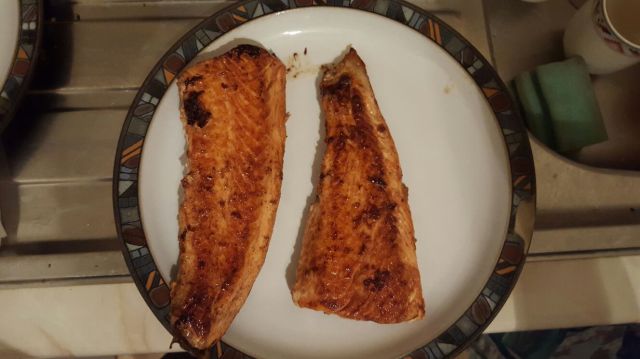
Recipe and Method courtesy of: http://www.japanesecooking101.com/salmon-teriyaki-recipe/
Dessert:
3) DORAYAKI
Prep: 5-10 minutes
Cook time: 5 minutes
Servings: 4/5
Ingredients:
1 1/4 cup of all purpose flour
1 tsp baking soda
3 eggs
1/2-1 cup of sugar
1 tbsp of honey
1/2 cup of milk
Method:
– In a bowl mix the baking soda and flour
– In a separate bowl, whisk the eggs, sugar, and honey and add milk. Mix well.
– Pour in the flour and baking soda mix into the egg mixture and whisk until the batter becomes smooth.
– Heat a non stick frying pan with a tiny piece of butter but rub around the pan with a tissue to make sure there isn’t too much on. On a medium to low hear, pour in some mixture onto the pan so it looks thick and circular like ny other pancake.
– Cook for around 2 minutes until the top of the pancake starts to slightly bubble and then flip over to cook for a further 1 minute.
– Usually you’d place a tablespoon of Anko red beans and cover it with another pancake, wrap it up with plastic and press down the edges. But I just made two separate pancakes, spread my jam on one side with the maple syrup and placed another pancake on top.
My photo isn’t that great because I started to eat it all forgetting I needed to take a photo and by the time I realised I had eaten all the mixture…
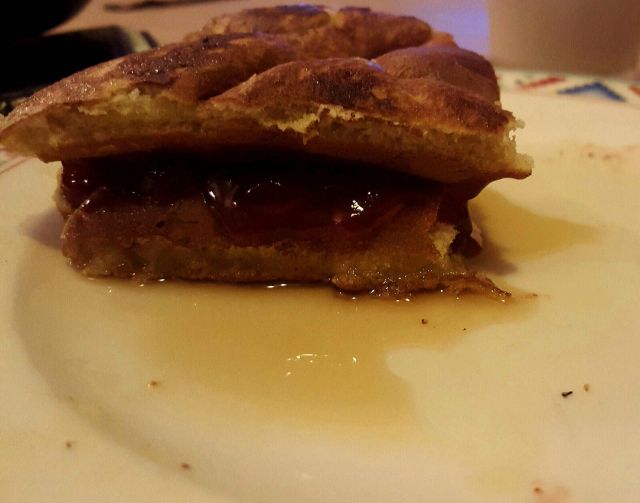
Recipe and Method courtesy of: http://www.japanesecooking101.com/dorayaki-recipe/
It’s a pretty daunting thought a 3 course meal that you’ve never cooked before but it was surprisingly really easy! And so yummy I’m even making Dorayaki instead of American pancakes on Shrove Tuesday.
Since the release of Avatar: The Last Airbender (2005) and Teen Titans (2006), anime has shown obvious influence on animation in America. Below is a list of 7 films which have been great inspirations:
1) PERFECT BLUE (1997) – Director: Satoshi Kon
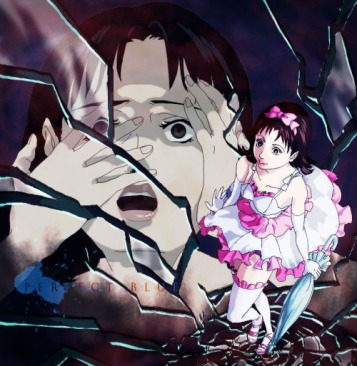
© Madhouse Productions
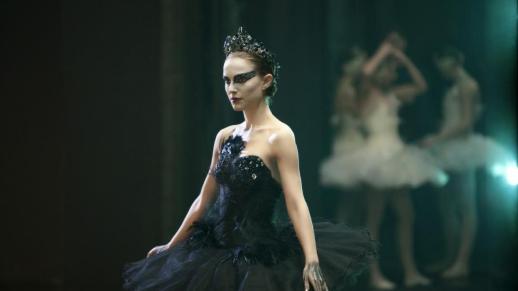
© Fox Searchlight Productions
About:
Mimi Kirigoe, J-Pop singer, quits music to become an actor. However, fans don’t take it too lightly and as an act of revenge publish her diary online by crazy stalker “Me-Mania”. After becoming a victim of rape she can no longer differentiate between fact and fiction. She then ends up wrapped up in a series of murders she has no recollection of committing.
Influences:
Although denied by director, Darren Aronofsky’s Black Swan depicts some similiar themes of a stars blurred lines between reality and fantasy. Also it has been said that Aronofsky bought the rights to the film to stage a similar scene in Requiem for a Dream.
2) KIMBA THE WHITE LION (1965) – Director: Osamu Tezuka
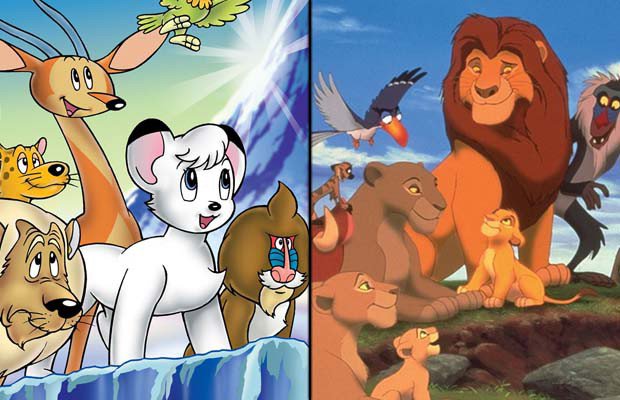
© Mushi Production © Walt Disney Picture
About:
Kimba is a white lion in captivation whose father was killed after attempting to create a safe space for wildlife in Africa away from villagers who steal their cattle for food. After Kimba escapes from the zoo he promises to go back to his land and try stand for peace and justice like his father. Throughout this journey he learns how humans works and how animals and humans must work together and understand each others habitats to exist together in harmony.
Influences:
Obviously The Lion King comes straight into mind. The similarities between Kimba and Simba are uncanny (names for starters). However, the creators of Kimba opted out of a lawsuit knowing they could never defeat the huge phenomena of Disney
3) GHOST IN THE SHELL (1995) – Director: Mamoru Oshii
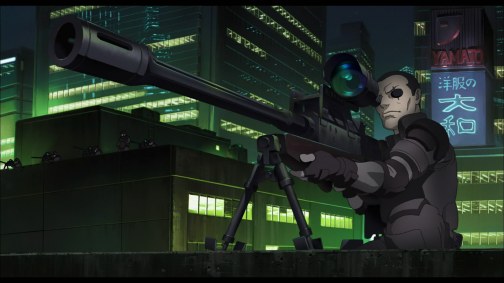
© Dark Horse Comics
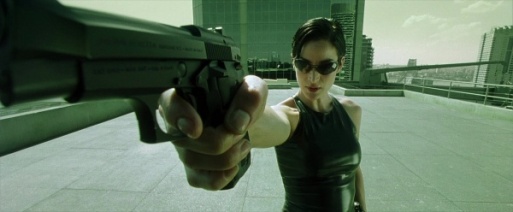
© Warner Bros.
About:
Set in a futuristic dystopia man starts to become replaced by machine. An investigation starts into the “Puppet Master” by cyborg detectives Major Motoko Kusanagi and partner Batou.
Inspiration:
When making The Matrix the Wachowski Brothers said they wanted the style and theme of Ghost In The Shell with even the opening titles of The Matrix mimicking the anime.
4) PAPRIKA (2006) – Director: Satoshi Kon
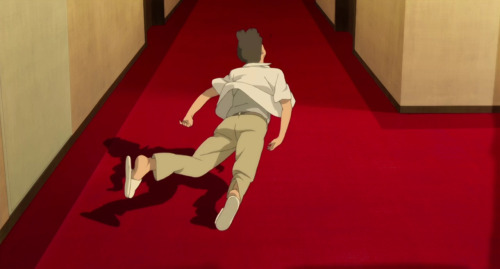
© Madhouse Prodctuon
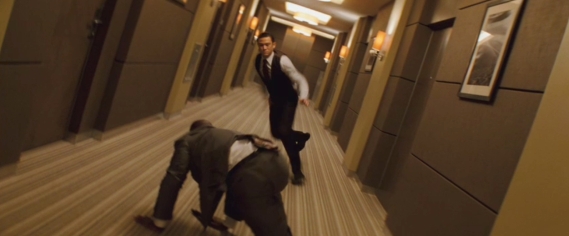
© Warner Bros. Pictures
About:
A child-like genius has invented a machine called the DC-Mini whereby users are able to view people’s dreams. It starts to be illegally used on psychiatric patients by Doctor Abuko Chiba. Detectives make it their mission to catch the culprit before there becomes a confusion and problem between reality and dreams.
Influences:
Christopher Nolan’s inceptions used the idea of the human subconscious.
5) BRAVE RAIDEEN (1975) – Director: Yoshiyuki Tomino, Tadao Nagahama
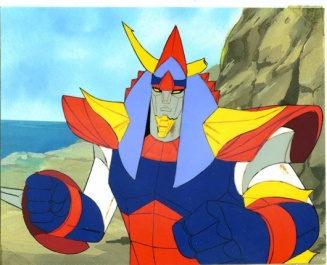
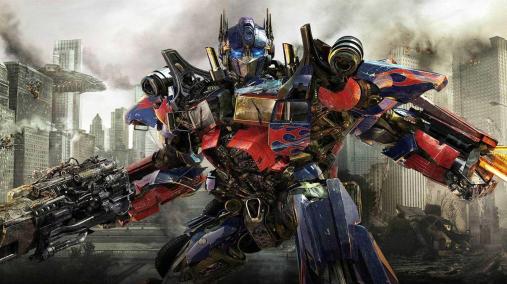
© Dreamworks Pictures
About:
The Demon Empire awakens after a million years with plans to take over the world. Akira discovers he is the ancestors of those from a lost continent Mu. United and takes control of the robotic guardian Raideen to defeat the Demon Empire and his monsters.
Influences:
Being both an influence of anime and Hollywood, it is thought we would have never seen Transformers come to life if it weren’t for Brave Raideen.
6) MY NEIGHBOUR TOTORO (1988) – Director: Hayao Miyazaki
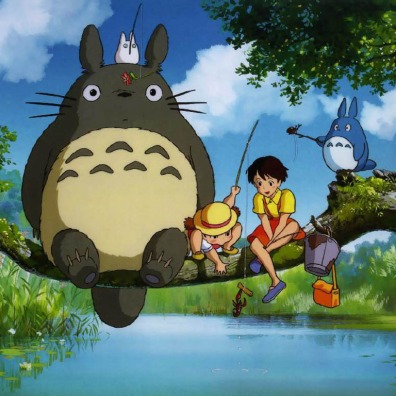
© Studio Ghibli
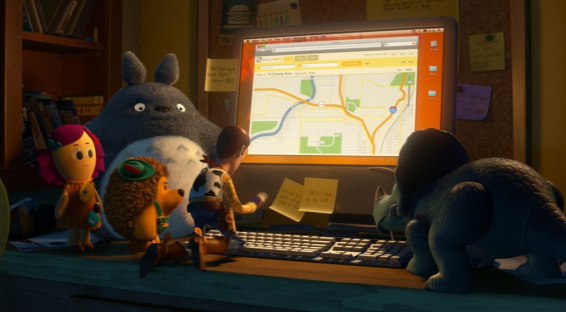
© Pixar Animations
About:
After sisters Satsuki and Mei move to the countryside with their father to be nearer their sick mother, the forest near their home takes them through a journey of fantasy with cuddly enormous creatures that no grown up can see.
Influences:
So many Studio Ghibli films influence Pixar and Disney with creative officer John Lasseter admitting My Neighbour Totoro is one of his favourites. Totoro was also featured in Toy Story 3 as a cameo so that “Studio Ghibli know how much they mean to us”, Lasseter says.
7) NINJA SCROLL (1993) – Director: Yoshiaki Kawajiri
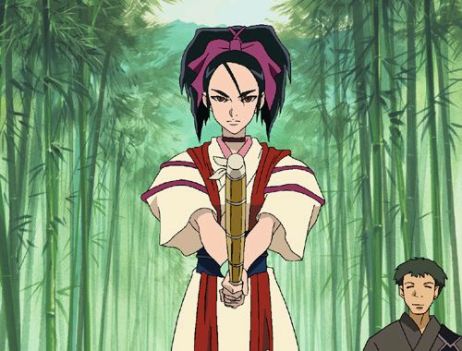
© Madhouse Productions
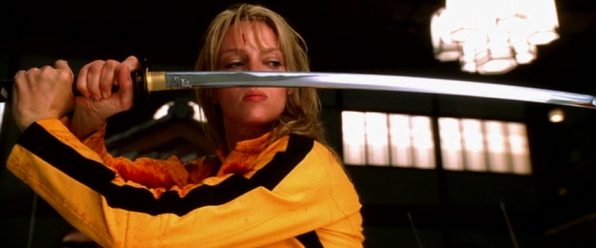
© Miramax Films
About:
After saving female ninja Kagero from being raped, Jubei Kibagami (a ninja-for-hire) becomes tangled up in a fight against demons.
Influences:
Quentin Tarantino’s Kill Bill portrays the anime style in the first film and especially in the Japanese style female fighting scenes.
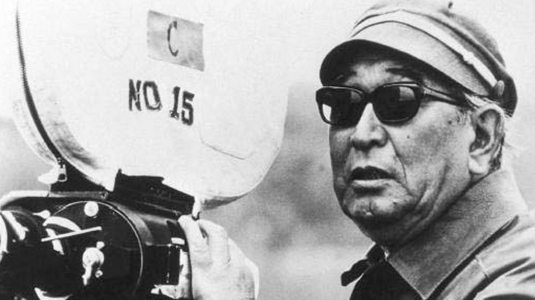
©Film4
Born in Japan 1910 Kurosawa always knew he wanted to be a filmmaker. At the age of 26 after his brother died he was recruited by Japanese film studio PCL. Film became his life, making more than 30 films, working as an Assistant Director, and writing many screenplays.
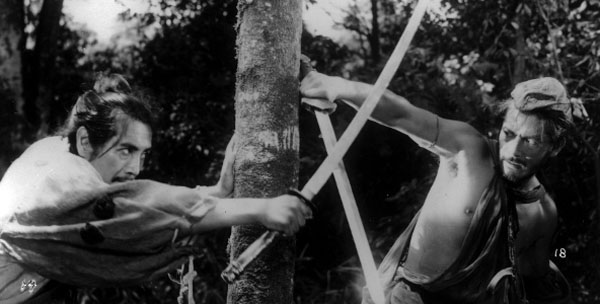
Rashomon (1950) ©Daiei Film
Rashomon (1950) winning the Golden Lion award became one of the biggest moments in Japanese film history. With an enormous amount of press worldwide it was the first time Japan had been viewed internationally in a great light after WWII. Startled by their success, Daiei Film Co. produced many subtitled versions for American and European countries and rereleased it worldwide. This meant that Rashomon was the first Japanese film to be seen and loved worldwide.
Seven Samurai (1954) and Yojimbo (1961) being his most influential works in Hollywood sees films such as The Magnificent Seven and A Fistful of Dollars deriving most of it’s style from them. Kurosawa was the most successful director to first use telephoto lenses for photography and the first to use slow motion in action sequences.
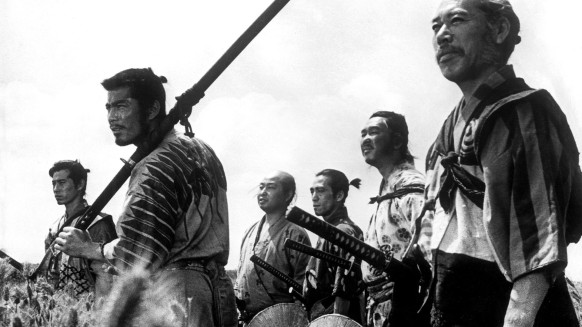
Seven Samurai (1954) ©Toho
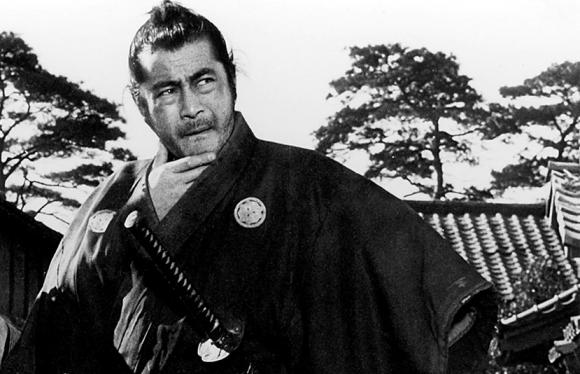
Yojimbo (1961) ©Toho Studio
Kurosawa’s film generally follow 4 characteristics which make his films so unique:
1.Repetition:
In order to emphasise the dynamic nature of some scenes, Kurosawa will repeat various narrative elements.
2. Narrative Pauses:
For the audience to take time and reflect on the previous scene to be able to follow what happens next, Kurosawa uses the simple technique of long narrative pauses.
3. Other Influences:
As a fan of European and American film Kurosawa has adapted literature such as Shakespeare’s Macbeth for his film Throne of Blood (1957). John Ford being his greatest inspiration, Kurosawa is rumoured to draw upon many of Ford’s great westerns.
4. Humanism
His work is based on the goodness and dignity of human beings. The human spirit is often the main notion around Kurosawa’s films.
“Kurosawa was one of film’s true greats. His ability to transform a vision into a powerful work of art is unparalleled” – George Lucas
1) SPIRITED AWAY (2001)
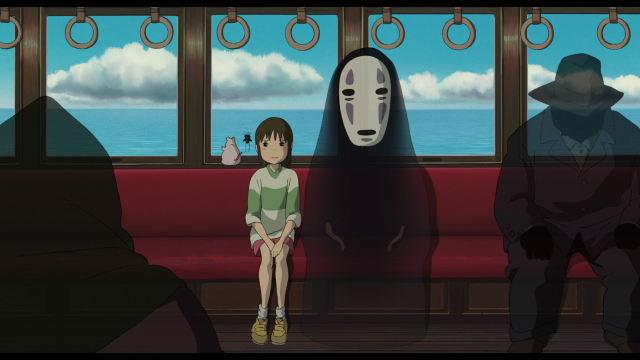
©Studio Ghibli
The first time I saw Spirited Away was at the Secret Cinema where I was able to eat all the different foods they were eating on screen. This included yummy rice balls, sweets and all sort of sushi, this is what makes Spirited Away one for the foodies.
Directed by Hayao Miyazaki, this Stuido Ghibli film offers an equal balance between horror and humour. The beautiful composition of art and Miyazaki’s unique way of making the audience feel compassion and appreciation towards the characters makes him one my top storytellers.
This film follows a shy, grumpy young girl named Chihiro whose parents decide to move far out of the country. Whilst on their way to their new home they explore an abandoned theme park where she is approached by a boy who warns her to leave before nightfall. However, before she is able to escape night has fallen and she ends up stuck in a spirit world.
I’m not going to give away the rest as it’s a great start for those who have never seen any anime before. Miyazaki draws on pain, death and blood whilst still keeping a childlike atmosphere around. It can be said this film features many life lessons implying that with love, humour and stunning animation these life lessons are all worth while.
2) URUSEI YATSURA: BEAUTIFUL DREAMER (1984)
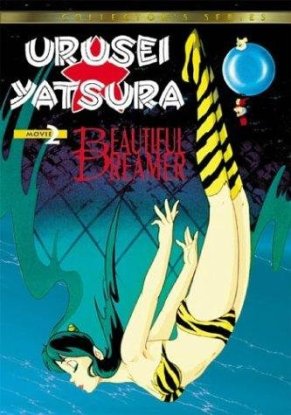
©AnimEigo ©MVM Films
Urusei Yatsura: Beautiful Dreamer is a long-running manga silly comedy series about a flirty schoolboy, his alien girlfriend, and their crazy classmates. This is the second Urusei Yatsura film for director Mamoru Oshii, and you can distinctively tell he made this film however and whatever he wanted. Although not being completely embraced by some Japanese, Western culture took a huge liking towards it as no previous manga knowledge is needed. Due to its cheeky innuendos and quirky humour this film makes it universal and fun despite your background.
3) PAPRIKA (2006)
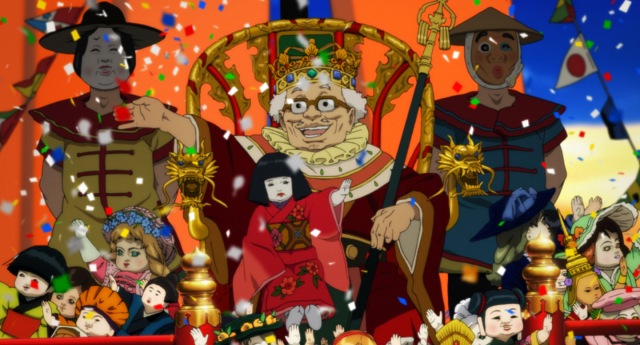
©Madhouse ©Sony Pictures Entertainment Japan
This was he last of masterful director Satoshi Kon’s work before he sadly died. However, he still managed to convey (like all this other films) tales of dreamy exploration and manipulation.
It is basically a film about dreams, jumping from one to the other eventually loosely tying up at the end, and revolves around the manipulation of dreams and how they can be accessed even in real life. Kon perfectly depicts the shift between reality and the dreamworld. It should be enjoyed as an exciting ride with giant dolls and clowns entertaining you throughout.
Paprika draws you in and never lets you go. You may feel a little confused throughout but that is the whole point, it opens up your conscious to some out of this world imaginations. Its visual beauty and vibrant characters makes it a must see.
4) PRINCESS MONONOKE (1997)
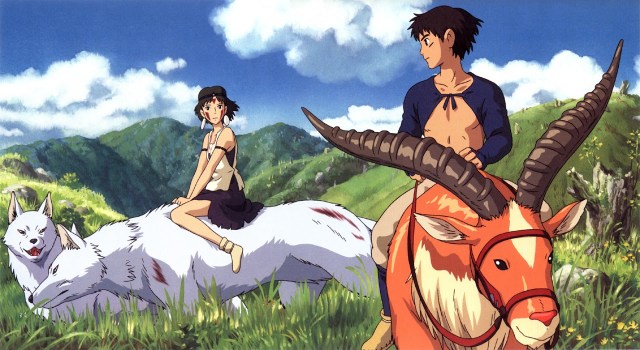
©Studio Ghibli
Another Miyazaki film, Princess Mononoke is set in a medieval Japan where some men lived in coherence with nature and others were out to destroy it. It tells the story of how all humans, animals, and nature Gods will fight for their power and land they want.
It’s attention to such close details makes this film, for me, one of the most visually inventive films. Miyazaki also creates a deep sense of humanism which differs from many other Hollywood love stories. In one scene, Ashitaka and San confess their lvoe for each other but because of the different paths their lives take they have to let each other go. Overall, it’s a must see and sways from conventional animations.
5) GHOST IN THE SHELL (1995)
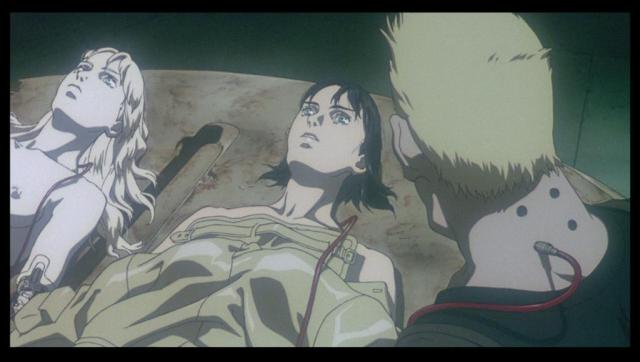
©Production I.G
Ghost In The Shell, directed by Mamoru Oshii, was adapted from Masamune’s manga series. Set in its near-future world, humans co-exist with robots and cyborgs. This film is predominately aimed at a more mature audience because of its scenes filled with sex, violence and nudity, and displays women as being protagonists but completely in the nude.
It’s not a film which can be grasped immediately, but it you can get past it’s mind-altering storylines it’s an anime which Sci-Fi fans will thoroughly enjoy.
Haruki Murakami, born in Kyoto 1949, sold the Jazz bar he owned with his wife in 1979 to become a full time writer after his first Japanese publication. His surrealist and fantasist narratives is what makes him an important figure amongst Postmodern literature.
Kafka On The Shore follows the lives of two protagonists, 15 year old runaway, Kafka Tamura, and an elderly man Nakata. It begins with the story of Kafka (whose real name we never actually find out) running away from his famous sculptor fathers home and ends up on a small island in Takamatsu called Shikoku. Here, he meets transgender librarian and its mysterious owner Miss Saeki who provides him with a job and shelter. Nakata’s plot begins with X-File record by American Occupation Force describing the events that took place during the war: a group of war evacuees loosing consciousness after supposedly spotting a UFO. All recovered expect for Nakata who woke up from a coma saying he is “not very bright” but has the power to talk to cats (Murakami’s books often feature cats to act as members from another world, and his Jazz cafe was called Power Cat). One of Nakata’s cat searches leads him to Kafka’s fathers house, Koichi Tamura (who is disguised as Johnnie Walker from the whiskey label), where Nakata is forced to kill him to save the cats souls from being used for flutes. After running away from the scene Nakata manages to hitchhike a truck ending up in Shikoku.
Going back to Kafka’s story, he falls in love with the 15 year old spirit of Miss Saeki (actually 50 years old) and starts a weird affair with her although she may be his real mother. Alongside this, Kafka is being hunted down by the police for the investigation into the killing of his father. To avoid this he flees to Oshima’s hut in the forest mountains where he finds an entrance to a semi-real underworld. In the meantime, Nakata tries to hand himself into the police but just gets passed off as having dementia, which is when he jumps into Hoshino’s truck to drive to Shikoku. This is where the two narratives start to link.
Although there are many plots to keep up with which helps keep everything new and exciting, there are still some loose ends that don’t seem to tie up. Obviously I’m not going to ruin the ending but to UFO X-Files are only talked about once and not so well explained. And we never really find out if Miss Saeki is actually Kafka’s real mother, all she tells him is “you know the answer”. Or Sakura? The young girl he meets early on who may or may not be his sister, but later rapes her in his dream!? However saying this as a Murakami fan the looseness entices me and it makes you dream up your own assumptions and conclusions.
It’s magical realism is what makes Kafka on the Shore so enigmatic and powerful than you would originally think. His extensive use of metaphors helps the audience think outside the box and move away from typical conventions. With reality being so unclear it opens your imagination to an array of ideas and endless possibilities. It’s one of the most captivating Murakami books yet.
I do highly recommend this book. Its surprises, jokes and dreamy illusions will keep you turning pages all night.
Can be purchased here on Amazon for only £6.29! http://www.amazon.co.uk/Kafka-The-Shore-Vintage-Magic/dp/0099458322
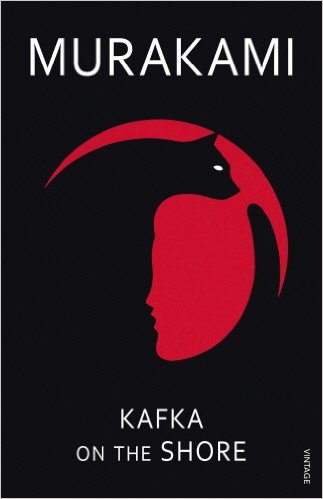
©Kodansha